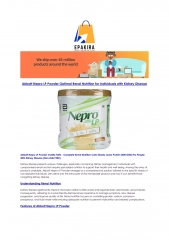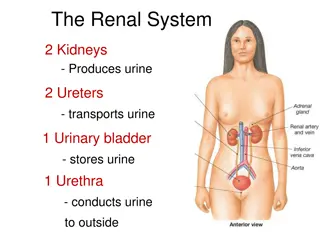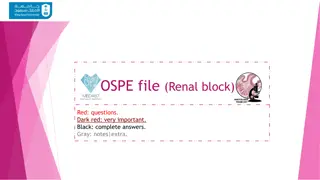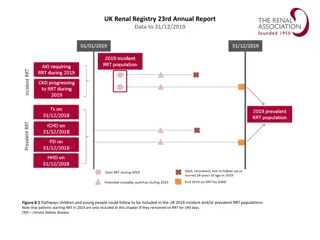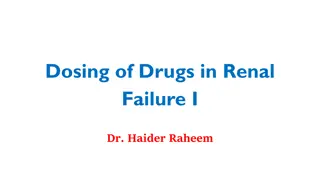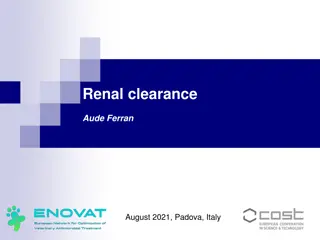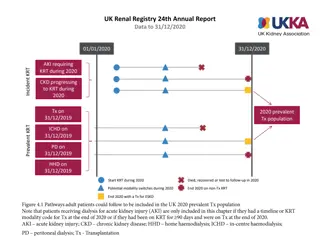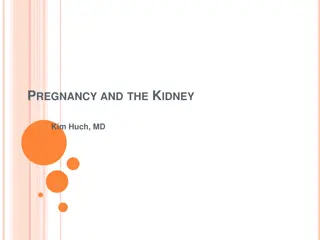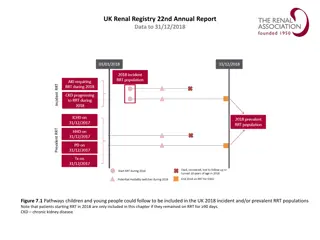Understanding Renal Regulation of Body Fluids
Renal regulation of body fluids involves mechanisms like water diuresis and osmotic diuresis to maintain fluid balance in the body. The secretion of Anti-Diuretic Hormone (ADH) plays a crucial role in controlling water retention. ADH release is influenced by factors like blood volume, blood pressure, and extracellular fluid osmolarity, leading to water reabsorption in the nephrons. Various images illustrate the processes involved in water retention and formation of concentrated or diluted urine through the actions of ADH on collecting tubules and ducts.
Download Presentation

Please find below an Image/Link to download the presentation.
The content on the website is provided AS IS for your information and personal use only. It may not be sold, licensed, or shared on other websites without obtaining consent from the author. Download presentation by click this link. If you encounter any issues during the download, it is possible that the publisher has removed the file from their server.
E N D
Presentation Transcript
RENAL REGULATION OF BODY FLUIDS
Water Diuresis By drinking large amount of fluid diuresis begins 15 mins after ingestion of H2O load and reaches maximum in 40 mins. This produce decrease in osmolarity and in antidiuretic hormone (ADH) secretion.
Osmotic Diuresis The presence of large quantities of unreabsorbed solutes in renal tubules causes increase in urine volume osmotic diuresis. Solutes that are not reabsorbed in the PT exert an osmotic effect as the volume of tubular fluid decreases and their concentration rises (i.e. Mannitol). Hold H2O in the tubule.
Retention of Water is controlled by Anti Diuretic Hormone (ADH) ADH Release Is Controlled By: 1) Decrease in Blood Volume 2) Decrease in Blood Pressure 3) Increase in extracellular fluid osmolarity
Secretion of ADH Urge to drink STIMULUS Increased osmolarity Post. Pituitary ADH cAMP +
Formation of Water Pores: Mechanism of Vasopressin Action
The Effects of ADH on the distal collecting tubules and collecting ducts Figure 26.15a, b
Role of the Distal Tubule and Collecting Ducts in Forming Concentrated or Diluted urine
Water reabsorption - 1 Obligatory water reabsorption: Using sodium and other solutes. Water follows solute to the interstitial fluid (transcellular and paracellular pathway). Largely influenced by sodium reabsorption
Water reabsorption - 2 Facultative (selective) water reabsorption: Occurs mostly in collecting ducts Through the water pores (aquaporin-2) Regulated by the ADH
Regulation of Renin Secretion: Renal Mechanism: 1) Tension of the afferent artery (stretch receptor) 2) Macula densa (content of the Na+ ion in the distal convoluted tubule) Nervous Mechanism: Sympathetic nerve afferent arteriolar constriction Renin secretion Aldosterone secretion Humoral Mechanism: E, NE, PGE2, PGI2
Helps correct NaCl / Extracellular fluid volume / Arterial blood pressure + H2O conserved Na+ (and Cl ) osmotically hold more H2O in ECF + + Angiotensin- converting enzyme Renin Na+ (and Cl ) conserved Angiotensinogen Angiotensin I Angiotensin II Aldosterone Na+ reabsorption by renal tubules ( Cl reabsorption follows passively) Circulation + + + ADH Thirst Arteriolar vasoconstriction Fluid intake H2O reabsorption by kidney tubules Renin-Angiotensin-Aldosterone System
Atrial natriuretic peptide (ANP) ANP is released by atrium in response to atrial stretching due to increased blood volume ANP inhibits Na+ and water reabsorption, also inhibits ADH secretion Thus promotes increased sodium excretion (natriuresis) and water excretion (diuresis) in urine
The thick ascending limb is very sensitive to diuretic drugs (Furosamide). These diuretics block the operation of the Na+-K+-2Cl cotransporter . The result is: Decreased NaCl reabsorption Isotonic fluid delivered to distal tubule instead of a hypotonic fluid Increased fluid excreted diuresis These drugs are called Loop diuretics NaCl reabsorption acts to dilute urine Osmolarity at end of thick ascending limb is near 130 mOsm and is dilute compared to plasma, which is ~300 mOsm
In distal tubule, drugs like the thiazide diuretics act to block Na+ entry by blocking the Na+-Cl cotransport. This cotransport is different from the cotransport on the loop (Na-K-2Cl). Other drugs like amiloride block Na+ entry. All diuretics, including these drugs would result in decreased Na+ reabsorption leading to an osmotic diuresis and increased urine formation. Since more Na+ is reabsorbed in the ascending loop, the Loop diuretics are more effective than diuretics which act in the distal tubule about 10 times more effective) K+ secreted more in collecting duct than in distal tubule
Ca2+ (+PTH) DCT NaCl NaCl NaHCO3 PCT K+ PST K+ H+ Ca2+ Glomerulus CT Na+ K+ 2Cl Mg2+ NaCl Na+ (+aldosterone) K+ K+ 2Cl Diuretics Acetazolamide Osmotic agents (mannitol) Loop agents (furosamide) Thiazides Aldosterone antagonists ADH antagonists H+ Thick ALH Thin DLH H2O (+ADH) CD Thin ALH H2O LH



